GardenerHeaven.com is reader-supported. When you buy through links on our site, we may earn an affiliate commission.
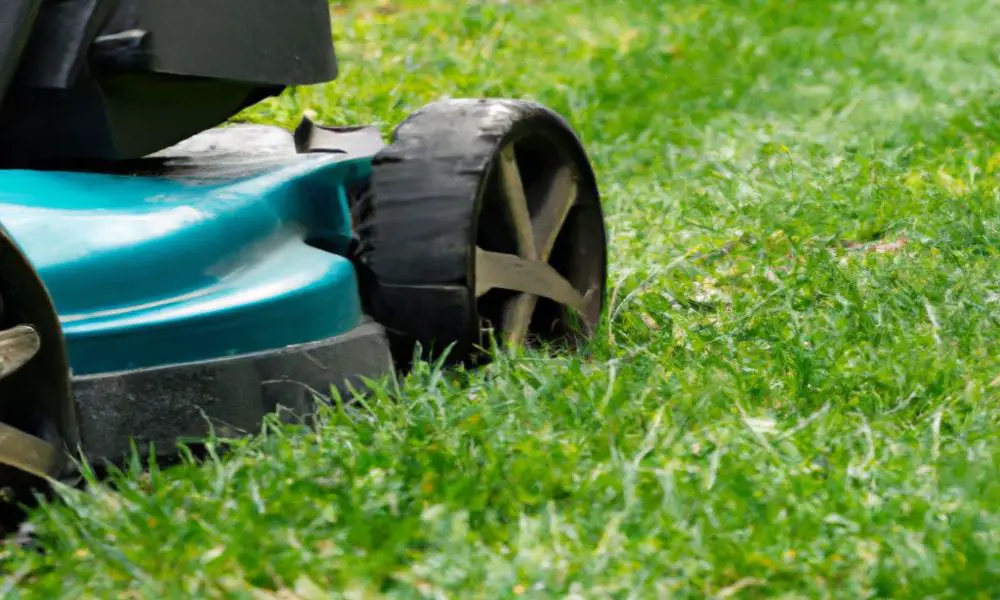
Achieving a smooth and even cut with a riding mower is crucial for maintaining a pristine lawn. In this section, we will discuss the importance of this task and explore practical techniques to ensure a flawless result. Whether you’re a homeowner or a professional landscaper, understanding how to achieve a well-manicured lawn with a riding mower is essential for enhancing your outdoor space. So, let’s dive in and discover the fundamental principles for achieving that smooth and even cut you desire.
The importance of achieving a smooth and even cut with a riding mower
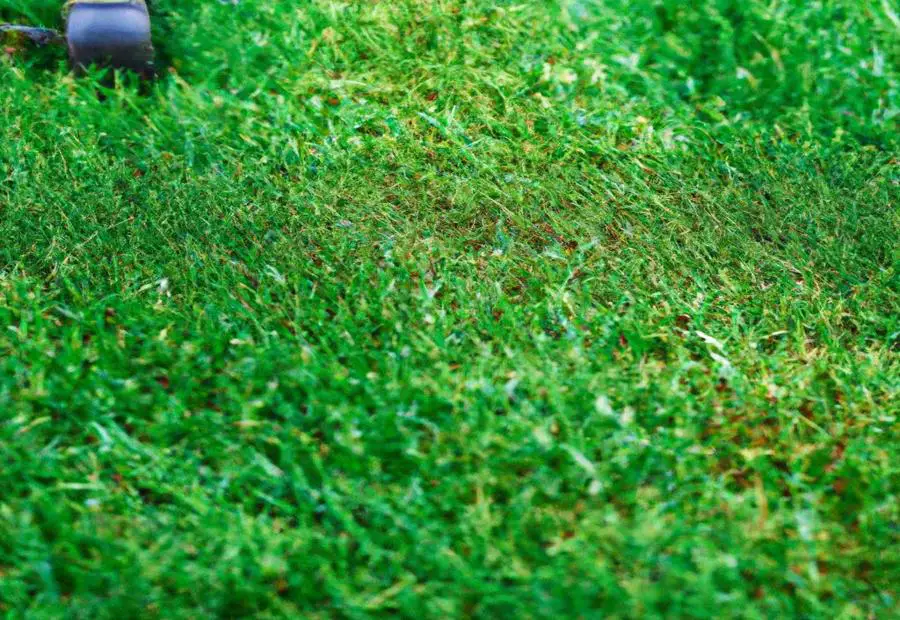
Photo Credits: Gardenerheaven.Com by Scott Brown
Smooth and even cuts with a riding mower are key for a good-looking lawn. It impacts the lawn’s appearance and gives it a neat, groomed look. It’s important to know what can cause uneven cutting and how to fix it to get this.
Common causes of uneven cutting include:
- dull or damaged blades
- incorrect cutting height
- improper tire pressure
- clogged mower deck
- uneven terrain
- worn or damaged parts
- improper setup
Dull blades tear or shred grass instead of cutting cleanly. Incorrect cutting height can cause uneven trimming. Improper tire pressure affects mower stability and balance, leading to uneven cutting. A clogged mower deck blocks grass clippings from being discharged, resulting in an uneven cut. Uneven terrain makes it challenging to have a uniform cut. Worn or damaged parts can negatively affect mower cutting. Improper setup affects blade positioning and results in an uneven cut.
To get an even cut with a riding mower, several steps must be taken:
- Check and sharpen blades regularly
- Adjust cutting height
- Maintain correct tire pressure
- Clean the mower deck
- Consider the terrain and adjust accordingly
- Check for worn or damaged parts
- Correctly set up the mower
To maintain even cutting, inspect and maintain the mower regularly. This includes lubricating parts, cleaning filters, and checking for loose or damaged components. Mow in straight lines and overlapping rows to ensure uniform coverage and no missed spots. Check blade balance and positioning for clean cuts without scalping. Adjust the mower deck to make it level for a uniform cut across the lawn. Handle uneven areas by slowing down or adjusting mowing patterns. Pay attention to engine speed and throttle settings.
Common causes of uneven cutting
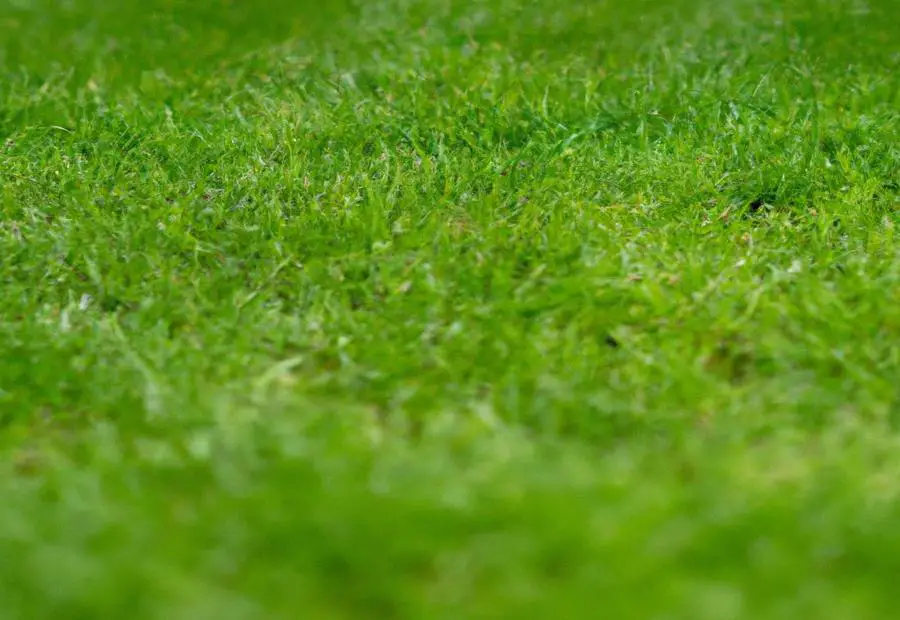
Photo Credits: Gardenerheaven.Com by Benjamin Hall
Uneven cutting can ruin the look of your lawn. This section will explore the common causes behind this problem and how to fix them. From dull or damaged blades to incorrect cutting height, we’ll uncover the factors contributing to unevenness. We’ll also address issues like clogged mower decks and uneven terrain that can affect the quality of your cut. Discover the solutions to achieve a smooth and even cut for a perfectly manicured lawn.
Dull or damaged blades
Blades demand attention! Dulls or damaged ones can ruin the cut of a riding mower. They can tear or shred the grass if they’re not sharp, giving it an unpleasant look.
- Dull blades Need to be sharpened for a clean cut.
- Damage blades: They should be replaced to avoid issues with cutting.
- Effects on cutting: Dull or damaged blades can cause the grass to be torn or shredded instead of cut smoothly.
- Maintenance is key: Inspect and sharpen blades regularly for a professional-grade cut.
It’s very important to keep blades in good shape. Dull or damaged blades don’t just look bad; they can also put extra strain on the mower. Regular maintenance means optimal performance and a gorgeous lawn.
Incorrect cutting height
A perfect cutting height is key to a smooth, even cut when using a riding mower. If it’s too low, it can lead to scalping, giving the lawn an uneven look. Too high, and you’ll be left with longer grass blades, making it appear unkempt.
To get the cutting height right, it’s essential to follow manufacturer guidelines and adjust the mower accordingly. Also, dull or damaged blades may not cut properly, so keep an eye on them.
Tire pressure plays a role, too. An over or under-inflated tire can cause one side of the mower deck to be higher or lower than it should be, again causing an uneven cut.
Regularly check and adjust blade sharpness and tire pressure for accurate cutting height. This way, your riding mower will provide a smooth, even cut.
Improper tire pressure
Insufficient tire pressure can lead to uneven lawn cuts. When the tires are not appropriately inflated, the mower’s weight is distributed unevenly, causing one side to cut lower than the other. This results in an uneven look and poor performance.
Correct tire pressure is key for a smooth, even cut. Improperly inflated tires can make the mower unstable, causing an uneven cut. Underinflation can make the mower tilt to one side. Overinflation causes bouncing and lessens traction, making maintaining the same cutting height hard.
Tire pressure must be checked and adjusted according to the manufacturer’s guidelines. Use a gauge to measure each tire’s air pressure and compare it to the PSI recommended by the maker. Then, adjust the pressure until it’s right.
Each tire should have the same pressure. An uneven pressure difference between tires can also lead to an uneven cut. Check each tire individually and adjust them if needed.
You’ll get an even cut and a professionally groomed lawn by maintaining the correct tire pressure. Plus, your mowing performance will be optimized.
Clogged mower deck
A clogged mower deck can affect the quality of your lawn cut. Grass clippings and debris obstruct the blades, leading to an uneven cut. To ensure a smooth cut, address the issue promptly! Here’s a 4-step guide:
- Clear debris: Turn off the mower and remove the key. Use a brush or scraper to remove any clippings or debris.
- Remove blades: Lift the riding mower and secure it. Locate and remove the blade mounting bolt(s). Wear gloves for protection!
- Clean underside: Use a hose or pressure washer to spray the underside of the mower deck. This will help clear away obstructions.
- Reassemble & test: Reinstall the blades, ensuring they are correctly aligned. Lower the mower and start it up. Check the smooth rotation of blades.
Follow these steps to restore optimal cutting performance. Regular cleaning of the mower’s undercarriage is essential to prevent clogging. This will help prolong your machine’s lifespan.
Maintaining a clean mower deck is key to achieving a smooth cut!
Uneven terrain
- You must adjust the riding mower and its settings to mow uneven terrain. Raise or lower the blades to avoid scalping on high areas and leaving patches on low areas.
- Check and inflate/deflate the tires regularly to maintain a consistent cutting experience.
- Clear clogs and debris from the mower deck for optimal cutting efficiency.
- Assess the landscape to identify areas with steeper slopes or uneven patches. Slow down in challenging areas or use extra passes for an even cut.
- Finally, check and replace worn or damaged parts. Damaged blades or worn-out components can impact cutting performance. Regular maintenance and inspection help maintain consistent results.
Follow these steps to get a professional-looking lawn on uneven terrain. Adjust cutting height, tire pressure, mower deck debris, terrain characteristics, and replace worn parts. This will give you a smooth and even cut!
Worn or damaged parts
Inspect and replace worn or damaged parts to get a smooth, even cut from your riding mower. The following parts may need attention:
- Blades – Dull or damaged blades lead to an inconsistent cut, leaving patches of grass untouched.
- Belts – Worn or damaged belts cause blades to spin unevenly, leading to an uneven cut.
- Pulleys – Worn or damaged pulleys prevent blades from spinning at the proper speed, which leads to an inconsistent cut.
- Bearings – Worn bearings cause vibrations and uneven movement of blades, resulting in an uneven cut.
- Deck components – A worn or damaged deck means blades are misaligned, leading to an uneven cut on the lawn.
Ignoring these issues causes further damage and decreases cutting performance. Don’t get stuck in a grassy jam – make sure your mower is set up correctly.
Improper setup
An improper setup of a riding mower can lead to an uneven cut. To prevent this, follow these steps:
- Check the tire pressure. Make sure it is at the recommended level for your mower model.
- Adjust the deck height. Refer to your mower’s manual for instructions.
- Verify blade balance. Inspect the blades for any signs of damage or wear and ensure they are balanced.
- Confirm belt tension. Check it regularly and replace it if needed.
Following these steps, you can ensure a smooth and even cut with your riding mower. Remember to consult your mower’s manual for more specific requirements.
Steps to achieve a smooth and even cut
Achieving a smooth and even cut with a riding mower doesn’t have to be a daunting task. In this section, we’ll explore the necessary steps to ensure a flawless cut on your lawn. From checking and sharpening the blades to maintaining the correct tire pressure and considering the terrain for necessary adjustments, we’ll cover all the essential aspects contributing to a well-maintained and properly functioning riding mower. Get ready to transform your mowing experience into a seamless and satisfying one.
Checking and sharpening the blades
Achieving a smooth, even cut with your riding mower is essential for maintaining a well-groomed lawn. But, this can be hindered if your blades are dull or damaged.
So, it’s essential to check and sharpen them regularly. Here’s a 5-step guide:
- Disconnect the spark plug wire for safety.
- Remove the blade assembly from the mower deck with a wrench or socket set.
- Inspect the blades for any signs of damage or wear, such as nicks, bends, or dents.
- Sharpen them with a file or grinder, following the manufacturer’s instructions on angles.
- Reattach the blade assembly and reconnect the spark plug wire.
Clean the blades after each use for optimal performance and safety, check for proper balance, and replace them if needed. Dull or damaged blades lead to uneven cutting and can put additional strain on the mower’s engine, causing decreased efficiency and potential breakdowns.
By regularly checking and sharpening your blades, you can ensure a smooth, even cut while prolonging the life of your riding mower.
Safety tip: Wear protective gloves when working with sharp objects like mower blades to prevent injuries.
Adjusting the cutting height
To achieve a smooth cut with a riding mower, it’s all about adjusting the cutting height. It is key to cutting the grass evenly and at the length you want. Avoid scalping and long patches of grass by getting the cutting height right.
Here are the steps to adjust it:
- See the current cutting height on the mower.
- Decide the desired height considering grass type, weather, and aesthetics.
- Find the adjustment mechanism (e.g., levers or knobs).
- Slowly adjust the cutting height to your desired level.
Do these steps carefully to get even results. Keep blades well maintained and monitor the grass length for a great-looking lawn.
When adjusting the cutting height, pay attention to details. Consider the grass growth rate and condition for optimal results and to avoid damage.
Maintaining the correct tire pressure
- Constantly check tire pressure for optimal performance. Use a pressure gauge for accuracy. Inflate or deflate if too low/high. Consult the mower manual for specific info. Keep consistent with checks and adjustments.
- Good tire pressure brings smooth, even cutting. Plus, it boosts maneuverability and stability. It also extends tire life and reduces wear on other parts.
- Regular tire check maintenance is necessary for peak performance. Achieve a professionally groomed lawn with regular tire pressure maintenance. This will add value and beauty to your property.
Cleaning and clearing the mower deck
Clean and clear mower decks are essential for smooth and even cuts. Regular cleaning and maintenance prevent clogs and buildup that result in uneven cuts. Here are four simple steps to keep your mower deck in top condition:
- Remove debris: Use a brush or scraper to loosen stuck-on material, then use a blower or hose to remove it.
- Clean the underside: Turn off the mower and tilt it on its side. Remove grass clippings, dirt, and other debris with a brush or scraper. Take care not to damage any parts while cleaning.
- Check for clogs: Look for clogs in the discharge chute and around the blades. Clear them with a brush or scraper.
- Inspect and lubricate: Inspect all moving parts for wear or damage. Replace any worn parts, and lubricate hinges or pivot points.
These steps keep your mower deck clean and ready for optimal performance. Your model’s manual might have specific cleaning instructions, too. To achieve a smooth and even cut, inspect and maintain the mower, mow in straight lines, and pay attention to engine speed and throttle settings. Now, you can enjoy a professionally groomed lawn! Adjust your mower for off-roading – buckle up for a wild ride!
Considering the terrain and making adjustments
Consider the terrain to get a smooth, even cut with a riding mower. Uneven terrain can cut look bad.
Here are five steps to consider the terrain and make adjustments:
- Level the mower deck. A level deck helps maintain an even cut across the lawn.
- Adjust the cutting height. On uneven ground, increase the cutting height to stop scalping or digging.
- Maneuver around obstacles. When mowing around trees or flower beds, adjust the mowing pattern. Be careful when turning around these obstacles.
- Make gradual turns on slopes. Gradual turns help prevent wheel slippage and an even cut.
- Adapt the speed. Slow down on rough or bumpy areas for the blades to cleanly cut the grass.
Different lawns might need different modifications. Consider these factors to adjust your riding mower and get a smooth, even cut throughout the lawn.
Checking and replacing worn or damaged parts
- To check and replace worn parts on a riding mower:
- Switch off the engine.
- Disconnect the spark plug wire for safety.
- Inspect blades, belts, pulleys, and spindles.
- Remove worn or damaged parts with the right tools.
- Replace parts with new ones that are compatible with your model.
- Reassemble securely and ensure everything is aligned.
- Inspecting other aspects of the mower regularly is essential for better lawn care. This includes fuel systems, oil levels, air filters, and battery health. Don’t forget to address any issues through maintenance. Otherwise, you’ll end up paying more for costly repairs.
- My friend’s experience is an excellent example of this. He had an uneven lawn because he didn’t check and replace worn blades. After he did, his mowing results improved for the better.
- This teaches us the importance of regular maintenance for a smooth and even cut.
Properly setting up the riding mower
Proper setup of the riding mower is key for achieving an even cut. Follow these steps to ensure your mower is optimal and ready to trim the grass. This will make your mower perform better with professional-looking results.
- Check and sharpen blades: First, inspect blades for dullness or damage. Dull or damaged blades can cause an uneven cut. So, sharpen or replace them if needed.
- Adjust cutting height: Next, adjust the cutting height of the mower deck. This lets you control how short or long you want the grass to be. This helps to get an even cut across the lawn.
- Maintain tire pressure: Proper tire pressure is necessary for an even cut. Uneven tire pressure can make one side of the mower drag, causing an uneven cut. So, check and maintain tire pressure according to manufacturer guidelines.
- Clean and clear mower deck: A blocked mower deck can also lead to an uneven cut. So, regularly clean and clear all debris from the underside of the deck, like grass clippings and dirt.
These steps guarantee a proper setup of the riding mower. They are checking/sharpening blades, adjusting cutting height, maintaining tire pressure, and cleaning/clearing the deck. This lets you get a smooth and even cut.
Don’t forget to inspect for worn or damaged parts when setting up the mower. Replacing these parts promptly will contribute to an optimal mowing experience and keep your lawn looking great. An even cut is like giving your lawn a professional makeover without makeup and hair products!
Tips for maintaining a smooth and even cut
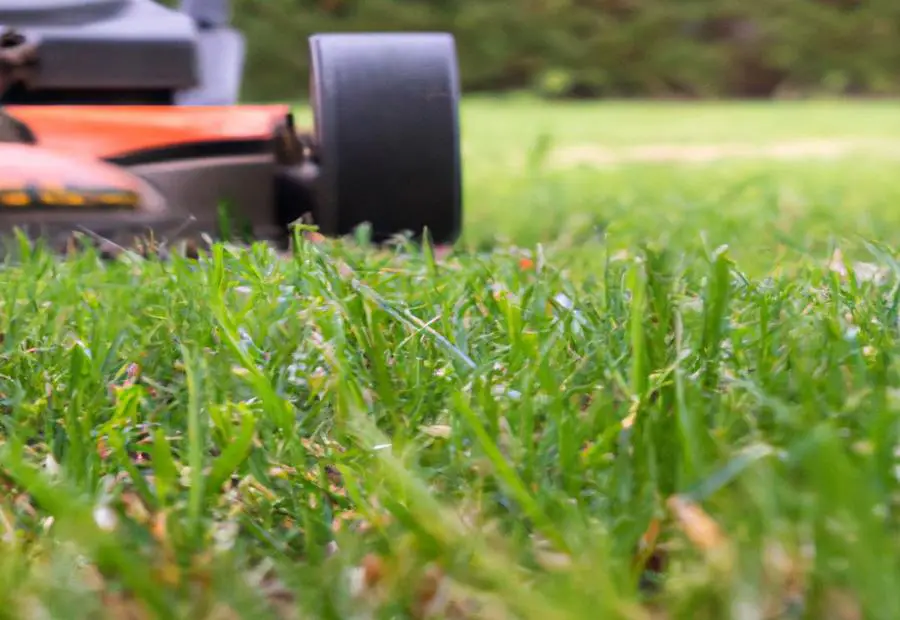
Photo Credits: Gardenerheaven.Com by Wayne Mitchell
Maintaining a smooth and even cut is crucial for a well-manicured lawn. This section will uncover essential tips and techniques to achieve just that. From regularly inspecting and maintaining your mower to adjusting the deck for a level cut, we’ll guide you through the necessary steps. We’ll also explore the importance of mowing in straight lines and overlapping rows, ensuring proper blade balance, and handling uneven surfaces effectively. Get ready to elevate your mowing game and transform your lawn into a picture-perfect oasis.
Regularly inspecting and maintaining the mower
Regularly inspecting and maintaining your riding mower is essential. Here’s a 4-step guide:
- Check the Blades: Look for signs of dullness or damage. Sharpen or replace them for optimal cutting performance.
- Lubricate Moving Parts: Use lubricant on pulleys, bearings, and linkage points. This minimizes friction and wear.
- Clean the Air Filter: Clean or replace regularly. Clogged filters reduce airflow, leading to decreased efficiency.
- Tire Pressure: Check and adjust regularly. Improper pressure can affect stability and cause uneven cuts.
Pay attention to details specific to your mower, like belts and pulleys. Refer to the manual for maintenance instructions.
Consistently following these steps ensures that your mower works best and achieves a smooth, even cut.
A homeowner learned this the hard way. He noticed an uneven cut, but it was due to a damaged blade. Replacing the blade and conducting a thorough inspection and maintenance routine fixed the issue.
Mowing in straight lines and overlapping rows will give you the best-looking lawn!
Mowing in straight lines and overlapping rows
Want a professionally groomed lawn? Here’s a 5-step guide to achieve it:
- Choose a reference point like a tree or fence to help you mow in straight lines.
- Aim for the farthest edge of the lawn from your starting point, and keep your eyes on the reference point.
- Turn the mower around & mow back in the opposite direction, parallel to your initial path.
- Overlap each pass by 1/3 of the mower’s cutting width.
- Continue until you’ve covered the entire lawn area.
Mowing in straight lines and overlapping rows has many benefits. Clippings get distributed more evenly, air circulation around grass blades is improved, and soil compaction from repeated passes is minimized. Plus, this technique reduces stress on grass plants and increases their ability to photosynthesize.
Start implementing this technique today! Enjoy the satisfaction of a perfectly cut lawn. Transform your lawn into an envy-inducing masterpiece.
Ensuring proper blade balance and positioning
A smooth, even cut with a riding mower is essential for a professionally groomed lawn. Ensuring blade balance and positioning is key to this outcome. Follow these three steps to ensure proper balance and positioning:
- Check and sharpen the blades. Dull or damaged blades can cause an uneven cut. Look for signs of wear or damage, such as nicks or bends. Sharpen blades when necessary.
- Adjust cutting height. Refer to the manufacturer’s guidelines or use trial and error to find optimal height.
- Maintain correct blade position. Blades should be securely in their slots. Check regularly and make sure they’re attached and tightened correctly.
Regular maintenance and care for your mower also play a role in achieving a smooth and even cut. Inspect and maintain the mower, mow in straight lines, adjust the mower deck for a level cut, pay attention to engine speed, and handle uneven surfaces.
These measures and techniques will help you maintain a professionally groomed lawn through proper cutting with your riding mower. Get ready to level up your mowing game and make your lawn smoother than a baby’s bottom!
Adjusting the mower deck for a level cut
- Park the riding mower on a flat and level surface. This is so it has a stable base and is accurate.
- Find the mower’s deck’s adjustment mechanism. It could be knobs or levers that can be turned or moved to raise or lower the deck.
- Refer to your owner’s manual or manufacturer’s guidelines to get the correct cutting height for your lawn. Use the adjustment mechanism to set the deck height.
- Use a carpenter’s level across two sides to check if the deck is level. Make more adjustments until it’s level.
- Check a section of your lawn to ensure no uneven areas. Make any necessary adjustments to fine-tune the leveling.
It’s important to remember that regular maintenance on the riding mower, like sharpening/replacing blades, ensuring tires have the right pressure, cleaning the mower deck, and checking worn/damaged parts, can help you get and keep a level cut.
Pro Tip: Always follow your owner’s manual or manufacturer’s guidelines for your riding mower model when adjusting the mower deck. This will help its performance and protect your equipment.
Keep your mower’s engine speed low – unless you want your lawn to sound like a NASCAR race!
Paying attention to engine speed and throttle settings
I had been struggling to get a smooth cut on my lawn. Then, one day, I got advice on engine speed and throttle settings. I applied it, and the results were excellent! Now, I regularly monitor engine speed and throttle settings while mowing. This ensures I get a well-manicured lawn every time. It shows that attention to detail makes a huge difference.
Smooth out those bumpy rides and level the playing field with expert tips for handling uneven lawn surfaces.
Handling uneven lawn surfaces effectively
- Inspecting and maintaining the mower regularly is key for dealing with uneven terrain. Checking for worn or damaged parts and replacing them as needed is crucial.
- Mowing in straight lines and overlapping each row is essential. This ensures thorough coverage of the whole lawn and prevents missed spots or uneven cutting.
- Balanced blades are vital for a flawless result. Check and make sure they’re correctly positioned often.
- Adjust the mower deck height according to the terrain. This helps maintain a level cut across the lawn for a smooth and even appearance.
- Engine speed and throttle settings must be followed based on the manufacturer’s guidelines. Adjust these settings as needed for smoother cutting.
- Lastly, different approaches are needed depending on the terrain. Slow down over bumps or dips, use caution on slopes, and adjust based on the terrain features. Adapting to the terrain helps effectively handle uneven surfaces for a well-groomed lawn.
Conclusion
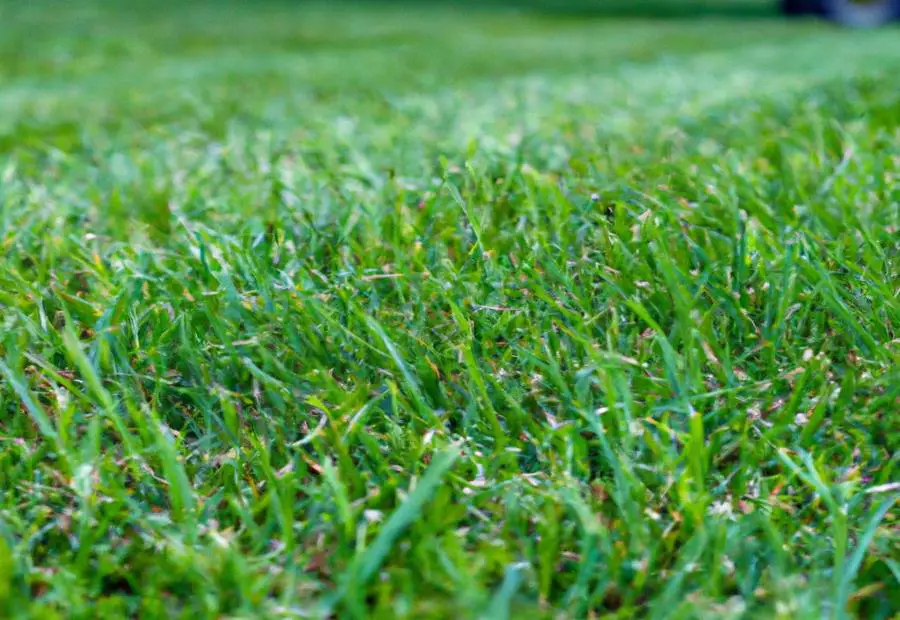
Photo Credits: Gardenerheaven.Com by Thomas Gonzalez
You can achieve a professionally groomed lawn with your riding mower by prioritizing regular maintenance and adopting proper cutting techniques. Taking care of your mower is essential for ensuring an even and smooth cut, while following the right cutting techniques can elevate the overall aesthetics of your lawn. So, let’s explore the importance of maintenance and care for your riding mower and the techniques that will help you achieve that immaculate, well-manicured look for your lawn.
Importance of regular maintenance and care for a riding mower
Keeping a riding mower in good condition is vital for optimal performance and a long life. Not doing so can cause many issues, like a bad cut and costly repairs. To avoid this, regularly maintain and care for your mower to get a smooth and even cut and professionally groomed lawn.
Maintaining the blades is key. Dull or damaged blades can cause an uneven cut. Check them often and sharpen them as necessary.
Adjusting the cutting height is also important. An incorrect height can lead to scalping or leaving patches of tall grass. Regularly check and adjust it for uniform length.
Proper tire pressure is also essential for an even cut. Incorrect tire pressure can lead to unequal weight distribution and an uneven cut. Check and maintain the correct level regularly.
Cleaning the mower deck is also essential. A clogged mower deck can obstruct the flow of grass clippings, leading to clumps and unevenness. Clean it out often for better airflow and cutting.
Your terrain matters, too. Uneven ground can prevent blades from consistently contacting the grass, creating an irregular cut. Make adjustments for different terrains to get an even finish.
Check and replace worn or damaged parts often. These can affect the mower’s ability to cut evenly and efficiently.
Set up your mower correctly, too. Level it, adjust all settings according to the manufacturer’s guidelines, and align the blades correctly. This will help you achieve professional-looking results.
Follow good maintenance practices and proper cutting techniques to get a smooth and even cut. Mow in straight lines with overlapping rows, correctly balance and position the blades, adjust the deck for a level cut, pay attention to engine speed and throttle settings, and handle uneven surfaces well. This will give you a beautiful lawn.
Achieving a professionally groomed lawn through proper cutting techniques
To get a professionally groomed lawn, use these steps:
- Inspect and sharpen blades – check regularly for dullness or damage. Sharpen or replace them to get a clean cut.
- Adjust cutting height – set the height of your mower according to the recommended guidelines. This will keep a consistent cut.
- Monitor tire pressure – adjust the tire pressure on your mower often. Poor pressure leads to an uneven cut.
- Clean the mower deck – remove debris or buildup for an even cut. Regularly clean for optimal performance.
When trimming, take note of the terrain. Change settings for uneven areas. Also, routinely check and replace worn parts.
To get a smooth cut, assembling and adjusting the mower according to the manufacturer’s instructions is essential.
Did you know? People used to use handheld sickles to trim their lawns manually. This took lots of effort and time. But riding mowers changed this, making maintaining a professionally groomed lawn easier. With the proper cutting techniques and maintenance, it’s more convenient and efficient.
Some Facts About Riding Mower Cuts Uneven? How to Achieve a Smooth and Even Cut:
- ✅ Uneven cutting of a riding lawn mower can be caused by various factors such as damaged wheels, a loose, bent, or dull blade, a bent crankshaft, or a clogged or damaged cutting deck. (Source: Team Research)
- ✅ To fix the issue, check the height of each wheel and ensure they are set at the same level. (Source: Team Research)
- ✅ Inspect all four wheels for any signs of damage or wobbling, and replace any damaged wheels. (Source: Team Research)
- ✅ Check if the mower blade is loose by tilting the mower and holding the blade to see if there is any vertical movement. Tighten the blade if it is loose. (Source: Team Research)
- ✅ A dull blade can also cause uneven cutting, so sharpen or replace the blade if necessary. (Source: Team Research)
FAQs about Riding Mower Cuts Uneven? How To Achieve A Smooth And Even Cut
Why is my riding mower cutting unevenly?
Riding mowers can cut unevenly for various reasons, such as incorrect tire pressure, worn or dull blades, unbalanced blades, mower deck damage or misadjustment, overlapping row mistakes, or operator error.
How can I achieve a smooth and even cut with my riding mower?
To achieve a smooth and even cut with your riding mower, you can follow these solutions: check and adjust tire pressure, level the mower deck, clean a clogged deck, mow at an appropriate speed, sharpen or replace dull blades, balance the blades, inspect and replace worn deck pulleys, and ensure proper overlap when mowing.
What can cause the blades on a riding mower to cut unevenly?
Dull or damaged blades, incorrect blade height, a bent or damaged spindle or spindle bearing, unbalanced blades, or incorrect blade installation can cause uneven cutting with riding mower blades.
Why is it important to follow the owner’s manual when troubleshooting issues with a riding mower?
Following the owner’s manual is essential when troubleshooting riding mower issues because it provides specific information about the power equipment used and safety instructions that should always be followed when servicing or repairing the equipment.
What safety precautions should I take when working on a riding mower?
When working on a riding mower, taking safety precautions such as turning off the unit, disconnecting the spark plug and battery cables, wearing safety glasses and gloves, and protecting against harmful chemicals and debris is essential.
When should I consider consulting a professional or seeking repairs for my riding mower?
If you have tried troubleshooting the issue with your riding mower, but the problem persists, or if you are unsure how to solve the problem, it is advisable to consult a professional or refer to a guide for common mower problems and their solutions.




